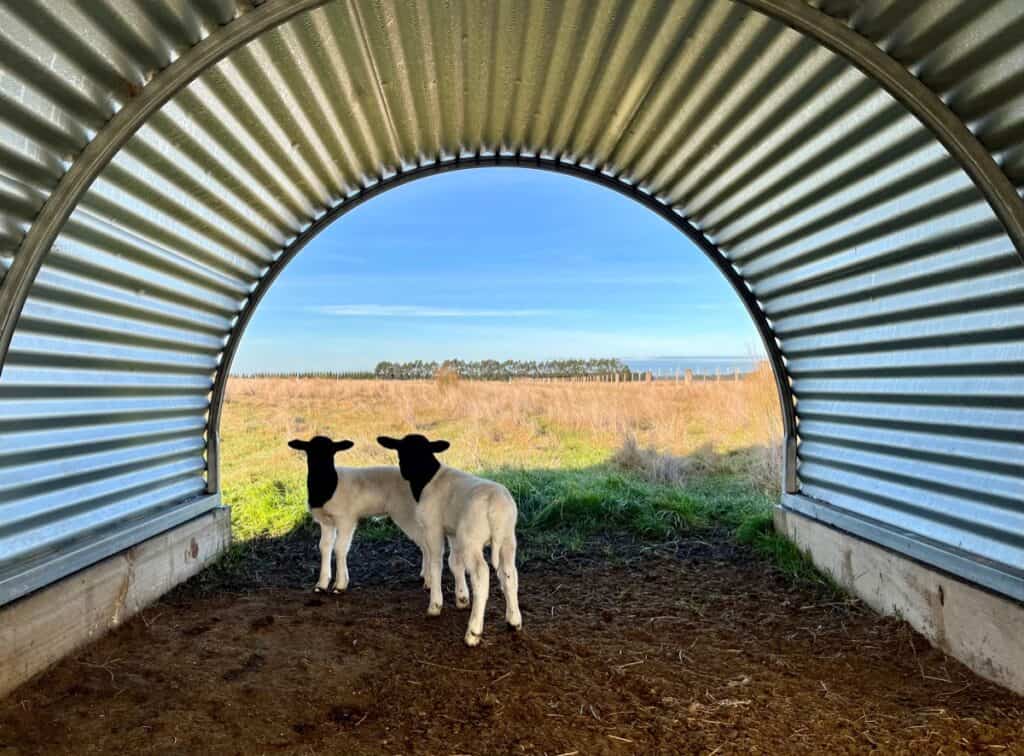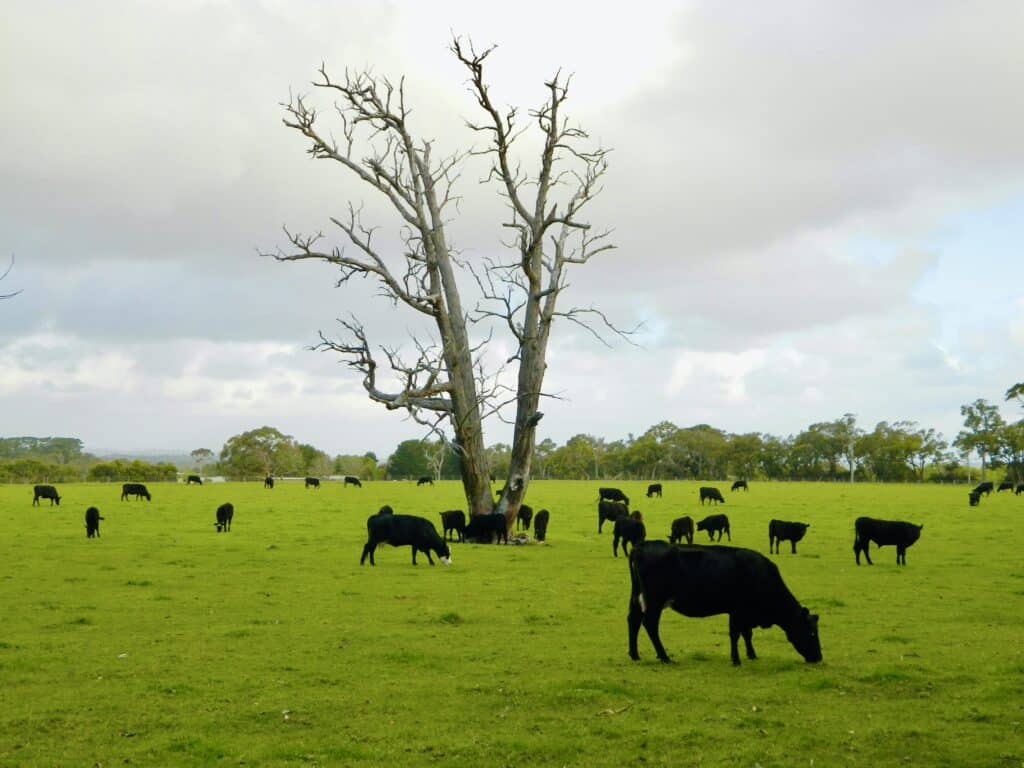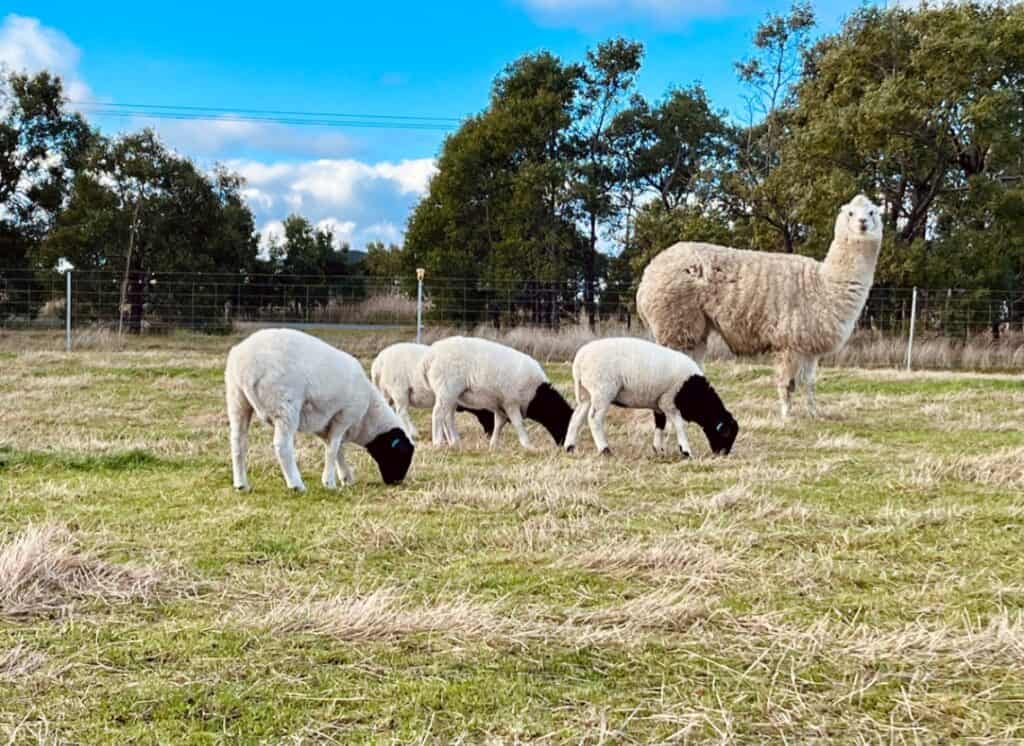Why choose a livestock guardian dog?
Livestock guardian dogs have been used across Europe and Asia for centuries to protect livestock from predator attacks. 2000 year old works of art and Roman books depict and talk to livestock guardian dogs being essential for successful farming. Thousands of years have gone into selectively breeding and training dogs for this purpose.
Today livestock guardian dogs are used around the world to protect herds of cattle, goats, alpaca, deer, sheep and flocks of poultry.
Guardian breeds are generally large, intelligent dogs, with a temperament that favours loyalty, alertness and protectiveness. It is important to note that aggression and territorial behaviour is a principle trait of a guardian dog breed. They can perceive intruders, whether sinister or not, as a threat and caution should be taken. Male guardian dogs can have a particular dislike of other male dogs. Guardian breeds are generally dominant and will assert leadership over their ‘pack’.
Guardian pups are raised with close contact to livestock and preferably the herd or flock they will be protecting as adults. This early introduction is referred to as imprinting; where the guardian dog creates social bonds with the livestock and sets adult behaviour towards livestock. Ideally guardian dogs are introduced and commence living with their herd at 4 to 5 weeks old. The best age for successful imprinting is 3 to 16 weeks.
Imprinting requires consistent daily training with supervision, guidance and correction to teach the guardian dog the rules and skills required. Guardian dogs live as a full-time member of the herd they are responsible for protecting. Most guardian dogs will start working within a year, however, will not reach maturity and be considered reliable until 2 years of age.
What is the cost and maintenance of a livestock guardian dog?

Photo by Andrea Somaruga on Unsplash
Well bred livestock guardian dogs will come with a much steeper asking price than those from an unproven breeding line. Regional differences, age and training will have an impact on upfront costs.
In terms of livestock guardian animals, livestock guardian dogs come with much greater overheads; food being the most substantial. Being large dogs, LGA’s quickly run up a decent food bill. You can also expect at minimum an annual vet bill.
Also consider whether you have the expertise to train the guardian dogs yourself are will need to source a professional.
Livestock guardian dogs are by far the most expensive guardian animal to maintain and in some scenarios the financial overheads are too great. Depending on your local predators a more cost effective option could be a livestock guardian alpaca, llama or donkey.
Do male or female dogs make the best livestock guardian?
Research has shown no significant difference in the effectiveness of a livestock guardian dog based on their sex. Both males and females are equally efficient if trained well.
Although, having a livestock guardian dog neutered does make for a better guardian. Especially if multiple livestock guardian dogs are working together.
You may see differences in protective behaviour between males and females. Females generally stay in close proximity to the herd while males tend too patrol a wider area.
How many livestock guardian dogs do you need?
The number of livestock guardian dogs required depends on a number of factors such as the size of the herd to be protected, acreage to be patrolled and the size of the predator population in the area.
As a general rule, the ratio of guardian dogs to livestock is 1:100. This is dependant on the dog being well trained.
If keeping multiple guardians within the same herd, a neutered animal will make for a better guardian. More dogs than is required can be ineffective, both in cost and performance. A larger pack can see increased infighting and a preoccupation with pack hierarchy.
What predators will livestock guardian dogs defend against?

Photo by Joshua Wilking on Unsplash
This is where livestock guardian dogs have a leg up over other livestock guardian species such as donkeys or alpacas.
Guardian dogs can successfully protect a herd from predators as small as foxes and quolls through too much larger threats such as wild dogs, dingoes, coyotes and wolves.
There is also notable success in the reduction or prevention of losses from predators as large as mountain lions and grizzly bears.
In most cases the scent, warning barks and patrolled fence-lines is enough for potential predators to think twice before trespassing guardian dog territories. Lamb (or other livestock) is no longer seen as an easy, risk-free food source.
Pro’s and Con’s of livestock guardian dogs
Pro’s
- Inherently protective of the flock
- Stays with flock in all weather
- Alert of a night when most predators attack
- Their size means they are suitable as protection against most predator species
Con’s
- Higher upfront costs than other livestock guardian species
- Long training time
- Training ‘accidents’ resulting in lose of stock
- High ongoing feed cost
- Care must be taken in their handling – terrible accidents can and do happen to both human owners and pets
6 Most Common Livestock Guardian Dog Breeds Around the World

Photo by Federica Giusti on Unsplash
There are over 50 breeds of livestock guardian dogs around the world.
Guardian dogs live as a full-time member of the herd they are responsible for protecting. Therefore, they need to be robust dogs and weather hardy. Some breeds are optimal for very cold regions including areas with snowfall, while others are favoured in hotter climates.
The following are the 6 most popular breeds working today:
- Akbash
- Antolian Shepherd
- Great Pyrenees
- Komondor
- Kuvasz
- Maremma Sheepdog
Other Livestock Guardian Animals
If you’re not sure if a livestock guardian dog suits the needs of your farm or homestead there are some other animals that may prove to be more suitable.
While guardian dogs are the ideal animal for the deterrence of larger predators, for smaller predators, such as foxes, you may want to consider a livestock guardian alpaca or llama. They are a much more cost affective livestock guardian, with little maintenance outside your standard sheep or goat farming practices.
Alternatively, livestock guardian donkeys are seeing a rise in popularity as guardian animals having proven their capability in flock protection against small to medium size predators.
Livestock Guardian Alpacas and Llamas
Livestock Guardian Donkeys
Best Livestock Guardian Animal for Lamb and Sheep
Feature Photo by Sandra-Beatrice Molnar on Unsplash
Share









